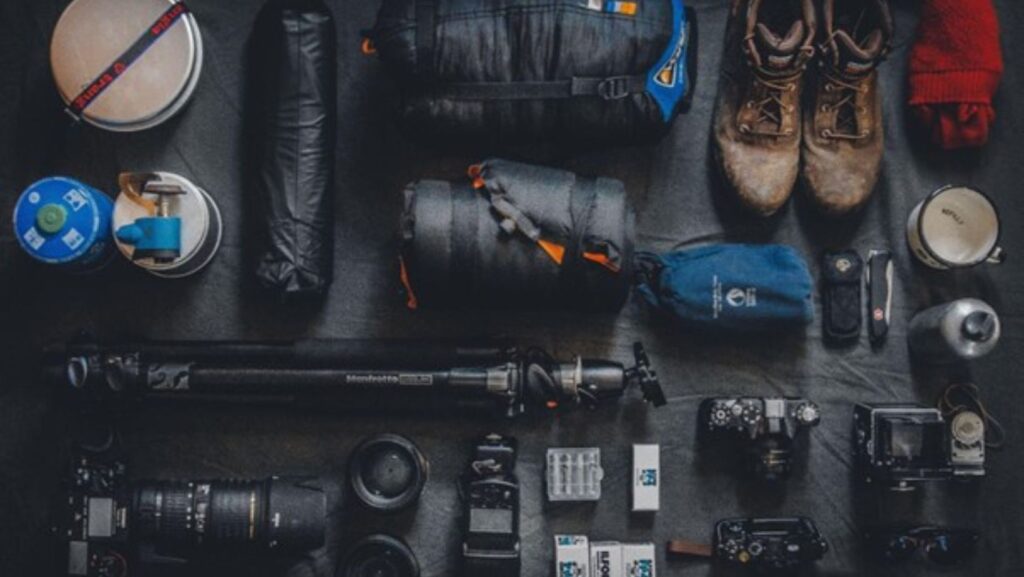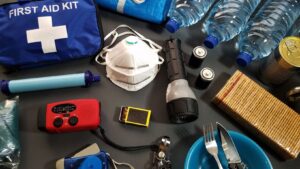Embarking on an outdoor adventure requires more than enthusiasm; it demands preparation. The adage “fail to prepare, prepare to fail” resonates with every adventurer, from seasoned explorers to weekend warriors. This guide serves as a blueprint for building a survival kit that could be your lifeline in the great outdoors.
Bear Grylls is a renowned adventurer who never compromises, and neither should you. We’ll look at the key components of a well-rounded survival kit. No stone is left unturned, from shelter to fire-starting tools, navigation essentials, and food procurement. If you want to put yourself outside your comfort zone and head into the wilderness on a weekend instead of sitting at home taking part in Vegas betting online but are unsure of what kit to pack, this guide is for you.
Table of Contents
Define Your Purpose
Understanding the why behind your kit is the first step on your journey. Clearly defining your intent ensures you tailor your kit to your specific needs and the challenges you may encounter along the way.
Nature enthusiasts gearing up for outdoor adventures require different supplies than someone planning to reside in urban areas. The former might focus on lightweight, durable gear suitable for camping or hiking, while the survival kit for the latter may revolve around scenarios like power outages or other emergencies.
Defining your purpose is a critical strategy that enables you to craft a survival kit that acts as a reliable companion regardless of where your journey takes you.
Shelter and Warmth
Having a reliable shelter and means of staying warm are fundamental aspects of ensuring your overall well-being. Investing in a lightweight, compact tent or durable tarp comes highly recommended. Waterproofing is essential, as is ventilation. Your portable shelter can provide a haven whether caught in an unexpected downpour or facing a night in the chill air.
A quality, insulated sleeping bag can be the difference between a good night’s sleep and a restless night. Choose one that suits the expected temperature range of your adventures. An insulated sleeping bag helps you stay warm and rested, ready to face whatever nature throws your way the next day. A lack of sleep can leave you wary and unable to concentrate; neither is ideal in the great outdoors.

Compact reflective blankets can be a Godsend for milder climates and colder nights. They trap and reflect your body heat and can even be used as a makeshift shelter.
Water and Filtration
Access to clean water is one of the most significant issues adventurers face out in the wild. The general consensus is that humans can survive for three days without water. Even becoming slightly dehydrated can negatively affect your body, from a lack of concentration, lethargy, and a significant drop in mood.
Always take some bottled water or a canteen with you, even in urban settings, to stay hydrated on the go. Water purification tablets or a water filter are essential for journeys off the beaten track. These help neutralize harmful microorganisms, making even the most questionable water sources relatively safe. The water may not taste great, but it could be a lifesaver, literally.
Nutrition
Include non-perishable, high-energy food items in your kit to ensure you can sustain your energy levels. You will burn more calories while hiking over rough terrain, and your body struggles to keep warm against the elements. Energy bars and dehydrated meals are lightweight yet practical.

Only ever eat berries and mushrooms you forage if you 100% know they are safe for human consumption. Eating the wrong ones will, at best, leave you with stomach pain and a nasty case of diarrhea (not ideal in the wild). At worst, they could poison you and lead to death. If in doubt, leave them alone.
Hunters among you should ensure you thoroughly cook what you catch. Cook the meat as soon as possible to avoid it spoiling and making you ill when you get around to eating it.
First Aid Kit
A well-stocked first aid kit is a non-negotiable component of any survival kit. Even the most innocuous bite, sting, graze or cut can quickly go from being mildly uncomfortable to becoming infected and life-threatening. Include prescription medicines, antiseptic wipes, bandages, pain relief, antihistamines, and stomach-settling medication. Regularly check your first aid supplies to keep them current and within their use-by dates.
Navigation, Communication, and Tools
Knowing where you are and how to communicate during an emergency can be lifesaving. Don’t expect your mobile phone to work because you are at the mercy of its ability to find a signal. Pack a reliable map and compass, and consider taking a GPS device.
A portable, charged battery pack can charge emergency radios or other equipment. Such radios can keep you informed about changing conditions and provide contact with the outside world.
No survival kit is complete without some versatile tools. A Sturdy knife, duct tape, and a quality multi-tool can serve many purposes, from building improvised shelters to repairing your gear. A flint and steel will help you light fires even in poor conditions. Don’t scrimp in this department; you want items that can withstand rough conditions.
Lighting
A reliable light source is often something beginners forget to pack, but they only forget once! Without light pollution from nearby towns and cities, it could be pitch black at night, and you will not be able to see your hand in front of your face. Try navigating rough terrain or finding items in your backpack when you cannot see. A durable flashlight or headlamp with extra batteries will suffice. You may consider a solar-powered lantern or one with a wind-up mechanism that does not require a power source.
Conclusion
Few activities in life are as exciting or fulfilling as adventuring and exploring. It is you against the elements and being one with nature on this incredible planet we call home. However, embarking on a journey off the beaten track comes with challenges and danger, so being prepared for the worst is vital to your safety.
By carefully selecting items for your survival kit, you ensure you’re ready for whatever challenges come your way. Take control of your safety, play for every eventuality, and confidently set off into the big outdoors.




